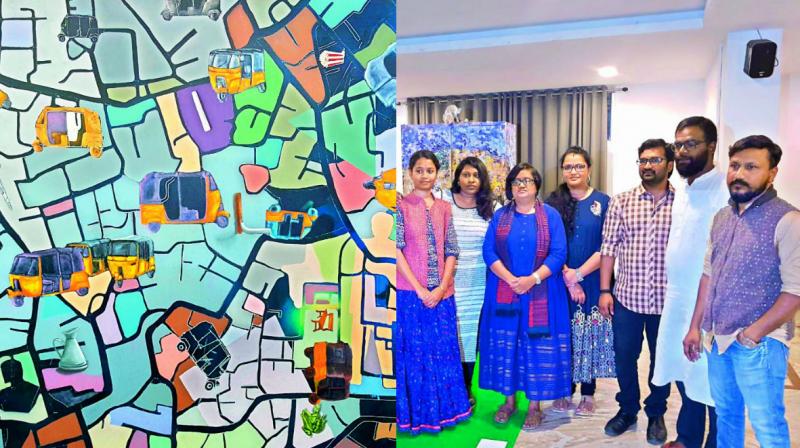Mapping the city

As a part of Krishnakriti festival, a group show titled, Mapping the City, on view at Kalakriti Art Gallery and Alliance Française, brings forth the glimpses of Hyderabad as perceived by ten artists. These artists have witnessed the transformations that have taken place in the city physically as well as spiritually; their works contemplate about the metamorphosis which has been gradual but prominent.
Nirmala Biluka,(faculty at JNAFAU) and the curator of the show throws light on the theme of the show and talks about the common aspects that bind all the works together, “The works of these artists are inspired by the rich cultural and historical heritage of the city. From the Leonard Munn maps to latest Google maps of the region, both old and new, become the lens through which each artist has attempted to lay out his personal experiences of the city as a site of exploration and memory.”
‘New media’ remains the preferred medium by the artists and it excels in strengthening and supporting their connotations to the fullest. An interesting depiction of the city gets reinstated in the painting by T. Taviti Raju titled, ‘the city maze’. As seen from a bird’s eye view, the meandering, coinciding and crisscrossing lines, on the picture surface represent roads and simplified icons stand for multiple places on the map. The overcrowded map contains repeated forms of auto rickshaws, running in all directions. The censors on a mat start playing the audio of traffic on a crowded road, when the viewer stands in front of the work. A similar interactive piece has been exhibited by P. Sravanthi. The doors of the metal ‘almirah’ open automatically when someone stands in front of it. The outer side of the ‘almirah’ contains collage of world map while the inside section contains linear routes and images of popular emblems from Hyderabad, like Birla Mandir, Charminar etc.
On the other hand, Masuram Ravikanth’s installation, a bioscope, reveals drawings of the seven wonders of the world. About his other works in the show, he explains, “My paper works on archival maps are superimposed with paintings which are excerpts from popular artist’s works.” An interesting wooden cube by Bhargavi Lata contains multiple sections that can be dismantled and built again. Titled appropriately, ‘construct-deconstruct’, it manifests the fact that the city is forever overwhelmed with incessant construction and building projects.
Another interesting work by Saisheela Kuresham, a faculty for art history at JNAFAU, contains forty ceramic tiles composed together like the board game ‘snakes and ladders’. “This work brings forth the political landscape of Hyderabad, of 300 years with reference to princely states and their rulers. The last tile depicts the year 1948 when Hyderabad became a part of India,” she says.

